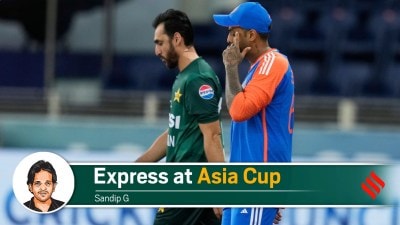Mumbai Aqua line’s final phase nears safety clearance by CMRS
The stretch, which completes the first underground metro corridor in the city, could be opened to the public once the CMRS gives a go-ahead, according to Mumbai Metro Rail Corporation Limited (MMRCL).
 The stretch, which completes the first underground metro corridor in the city, could be opened to the public once the CMRS gives a go-ahead, according to Mumbai Metro Rail Corporation Limited (MMRCL). (File)
The stretch, which completes the first underground metro corridor in the city, could be opened to the public once the CMRS gives a go-ahead, according to Mumbai Metro Rail Corporation Limited (MMRCL). (File)
Mumbai’s fully underground Metro Line 3, also known as the Aqua Line, is inching closer to completion as the Commissioner of Metro Railway Safety (CMRS) started inspection of the last section between Worli and Cuffe Parade on Friday.
The stretch, which completes the first underground metro corridor in the city, could be opened to the public once the CMRS gives a go-ahead, according to Mumbai Metro Rail Corporation Limited (MMRCL).
The CMRS inspection is the precursor to issuing a safety certificate for operations to begin. Officials indicated the inspection report would be ready by next week, following which the board will come back for a final check. If the last 10.99 km section is cleared, services on the overall 33.5 km Colaba to Aarey corridor could begin soon.
“A team from CMRS had visited. CMRS will now come as per schedule and the inspection to be finalised by him. Once CMRS gives go ahead, the line will be operational,” said a senior official from MMRCL.
As per procedure, any suggestion made in the ongoing inspection will be implemented before the next visit by CMRS. Trial runs have already been conducted on the Worli-Cuffe Parade section since April for testing systems and safety preparedness.
Currently, Metro 3 services operate on a 22.46 km section between Aarey and Acharya Atre Chowk in Worli which was started earlier this year. The last leg will include 11 new stations and extend the line to the city’s southern business centers and seal the chain between Colaba, Worli and Bandra-Kurla Complex (BKC) through to Aarey in the western suburbs.
After opening, Metro Line 3 will lessen the burden on suburban railways and road traffic while enhancing connectivity between the city’s major residential, commercial and transit nodes.
The Metro 3 project, executed by MMRCL, has been one of Mumbai’s most ambitious urban transport undertakings.
Work on the entire corridor began in 2016, involving extensive tunnelling beneath some of the busiest and most congested areas of Mumbai. The line comprises 27 stations, all underground, and is designed to integrate with existing suburban railway stations and other upcoming metro lines.








